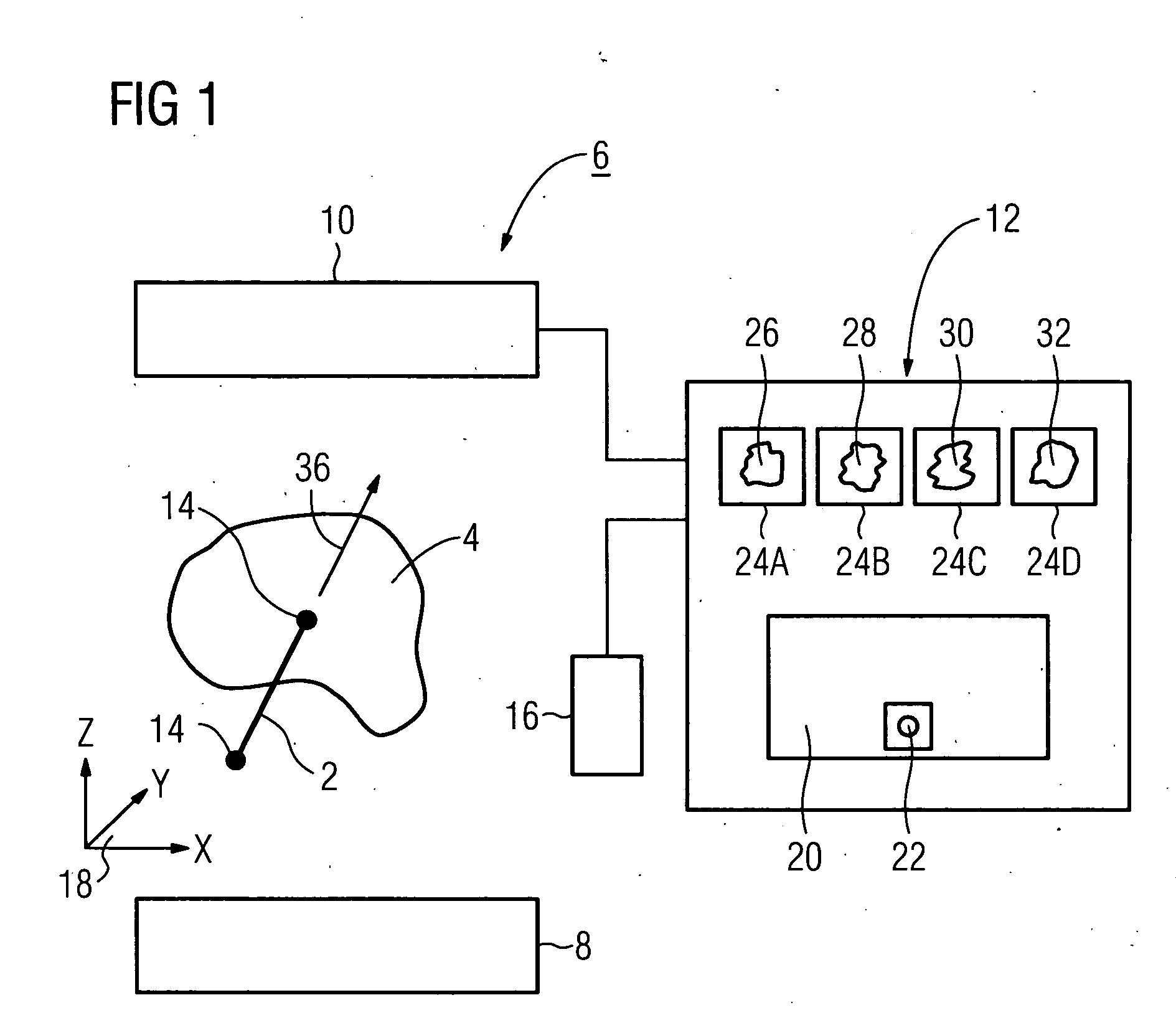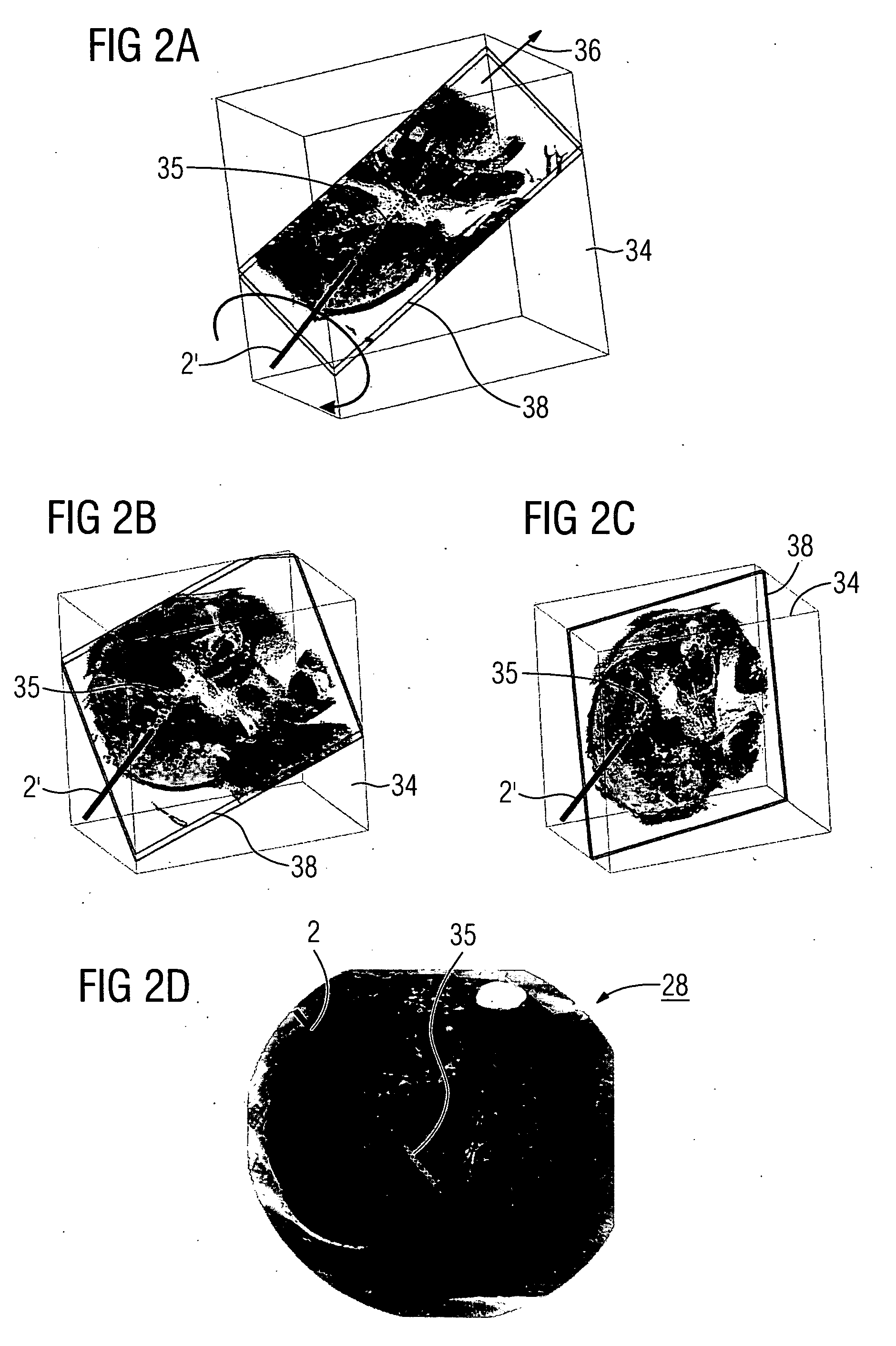Method for displaying a medical implant in an image and a medical imaging system
a technology of medical implants and images, applied in the field of medical implants in images and medical imaging systems, can solve the problems of difficult intuitive acquisition of the relationship between the implant and the tissue being passed through, and the difficulty of the personnel providing the treatment to orient themselves,
- Summary
- Abstract
- Description
- Claims
- Application Information
AI Technical Summary
Benefits of technology
Problems solved by technology
Method used
Image
Examples
Embodiment Construction
[0032] The medical imaging system shown in a highly simplified manner in FIG. 1 is used to assist during the medical treatment of a patient. It is used in particular to visualize the position of a treatment device, in particular a needle 2, in relation to a region 4 to be examined, in a manner that can be acquired intuitively by medical personnel. In the exemplary embodiment the medical imaging system comprises a medical imaging examination device 6, for example a C-arm computed tomography device, a magnetic resonance device or even an angiography system. The examination device 6 has a radiation source 8 and a detector 10. The radiation source 8 is in particular an x-ray radiation source and the detector 10 is an x-ray detector. The radiation source 8 and detector 10 are disposed opposite each other. The patient with the region 4 to be examined is located between them. The measurement data acquired by the detector 10 is transmitted as raw image data to an image-processing system 12....
PUM
 Login to View More
Login to View More Abstract
Description
Claims
Application Information
 Login to View More
Login to View More - R&D
- Intellectual Property
- Life Sciences
- Materials
- Tech Scout
- Unparalleled Data Quality
- Higher Quality Content
- 60% Fewer Hallucinations
Browse by: Latest US Patents, China's latest patents, Technical Efficacy Thesaurus, Application Domain, Technology Topic, Popular Technical Reports.
© 2025 PatSnap. All rights reserved.Legal|Privacy policy|Modern Slavery Act Transparency Statement|Sitemap|About US| Contact US: help@patsnap.com



